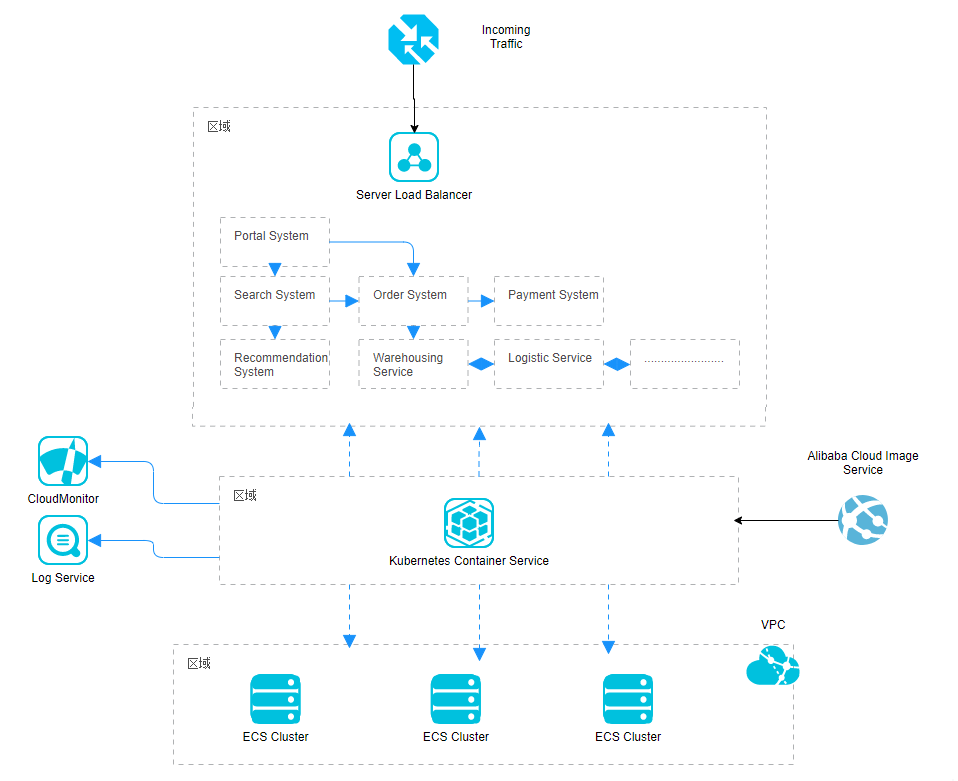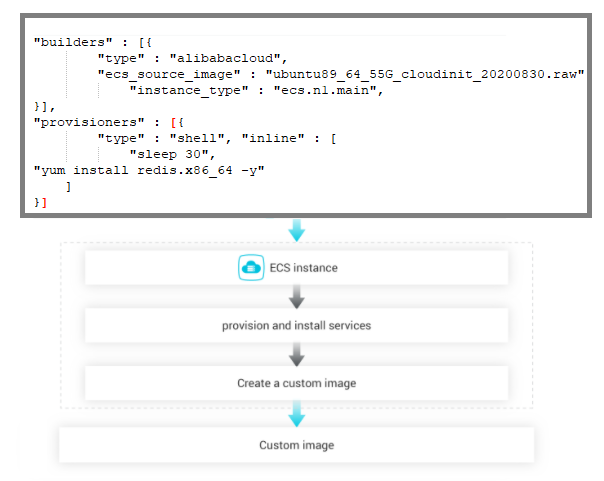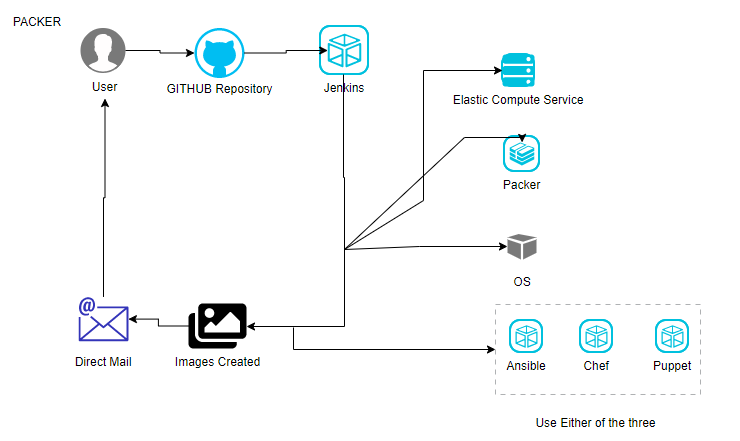By Shantanu Kaushik
Alibaba Cloud and its products have proven to be one of the most elastic in terms of usage. Cloud infrastructure mainly depends on how precise, optimized, and properly placed your products and services are. Products like the Elastic Compute Service (ECS) and Alibaba Cloud Container Service for Kubernetes (ACK) have brought enormous elasticity of operations and easier development/deployment for developers.
Similarly, the DevOps solutions offered by Alibaba Cloud have optimal reliability associated with accelerated development and delivery of applications on the cloud. Implementing DevOps has taken away the two roles of development and operations and made these two a single entity. This has helped complete organizational goals while staying in sync.
As we discussed in part one of this article, Alibaba Cloud has worked toward providing exactly what organizations seek, an urgency to develop a unified software development and delivery model. In part two of this article, we will discuss more automation tools associated with DevOps that will further provide better automation and delivery models.
DevOps is mainly preferred because it offers some of the most important mechanisms for better and more enhanced application development, delivery, and the aftermath. It provides very convenient automation for building, testing, and reporting. These processes ensure a more reliable, error-free, and efficient integration and development.
Efficiency in resource management is another plus when it comes to saving resources while repeatedly solving the same problems. Alibaba Cloud DevOps provides a standardized approach to deployment and the production environment. With that, end-to-end monitoring provides a robust and error-free system, ensuring business agility. Now, let's discuss some other DevOps tools.
With the help of Container Microservices, a user can run an application across multiple computing environments. It could be a production environment or moving from a physical machine to a virtual machine on the cloud. The only requirement is ensuring the same kernel type.
Alibaba Cloud Container Service helps overcome conflicts between teams working on different software within an infrastructure. It creates microservices that are small parts that constitute a bigger application. It enables the reuse of code for the developer and also enables a container to dislodge an application from its surroundings so the developer teams can continue working on such containerized application fragments. These containers work on a single OS and share a kernel with containers.
The Alibaba Cloud team has worked and come up with extreme refinements to the complete process of implementing the container methodology. With containers, you can distribute an application into multiple microservices. These microservices are tiny elements that work together to form a bigger application. This minimizes the total time taken between build, test, deploy, and integration cycles and accelerates development.
With the time saved in the initial phases of development to deployment, better forms of business agility are achieved. This form of deployment ensures an optimized cloud infrastructure as the user can deploy multiple containerized applications within a single cloud instance. Containers are very lightweight services that are very easy to manage and can be deployed onto multiple operating systems and/or virtual machines.
One such service that has made its mark is Kubernetes.
Kubernetes is an open-source system that is used to automate deployment and achieve scalability with containerized applications. You can follow this guide on Alibaba Cloud's website to create an ACK Cluster. ACK is the Alibaba Cloud Container Service for Kubernetes.
After deploying Kubernetes with Alibaba Cloud you can achieve
Let's take look at how the Container Service works:

Packer is a tool best known for its ability to create machine images automatically. Developed by HashiCorp, Packer uses templates to provision ECS instances and service installation. Once a template is defined, it can be reused to cut down a user's time to execute a repetitive task.

The above flow represents how Packer executes code and creates a custom image using Alibaba Cloud Packer solution.
Packer supports both Windows and Linux to create custom images in RAW or VHD formats. This DevOps automation tool with Alibaba Cloud architecture opens up a gateway for new opportunities with its ability to use frameworks like Puppet or Chef. By using automated scripts for installing and configuring software within a custom-image, it opens up the potential for upgrade and configuration with ease and reliability.
Packer enables very quick deployment of already configured and provisioned machines that would traditionally take a long time to do. The images created by Packer are identical and support multiple platforms that can run a virtual private cloud and virtual development solutions. By running identical machines, the user gets immense portability.
Alibaba Cloud with Packer provides advanced testing scenarios. While image building is taking place, the machine image goes through smoke testing, and a positive result ensures that the generated image will function properly.
Let's take a look at the information flow diagram for Packer:

Packer packs a punch in its operability. This DevOps automation tool provides ease in building custom images and very efficiently adopts modern configuration management methods. It incorporates the usage of today's best automation tools like Chef or Puppet to install and configure the software.
The flow shown in the image above represents the need for multiple images to be created with the same configuration and supports the same configuration under all environments. By incorporating Alibaba Cloud ECS with the packer module, the service performance jumps up a notch and proves to be quicker than before.
Alibaba Cloud DevOps solutions provide state-of-the-art functionality by using automation tools that have a proven history and have gone through years of upgrades and usability. IAC Terraform, Packer, and the Alibaba Cloud Container Service for Kubernetes (ACK) have been backed by Alibaba Cloud support. As a developer or IT decision-maker, you get the best DevOps practices to achieve productivity and reliability of operations.
The views expressed herein are for reference only and don't necessarily represent the official views of Alibaba Cloud.
DevOps for the Cloud: Key Findings and Introduction to Automation Tools - Part 1

2,599 posts | 769 followers
FollowAlibaba Clouder - September 1, 2020
Alibaba Clouder - September 9, 2020
Alibaba Clouder - January 27, 2021
Alibaba Clouder - January 27, 2021
Alibaba Cloud Data Intelligence - August 14, 2024
Alibaba Clouder - August 14, 2020

2,599 posts | 769 followers
Follow DevOps Solution
DevOps Solution
Accelerate software development and delivery by integrating DevOps with the cloud
Learn More Alibaba Cloud Flow
Alibaba Cloud Flow
An enterprise-level continuous delivery tool.
Learn More Container Service for Kubernetes
Container Service for Kubernetes
Alibaba Cloud Container Service for Kubernetes is a fully managed cloud container management service that supports native Kubernetes and integrates with other Alibaba Cloud products.
Learn More Function Compute
Function Compute
Alibaba Cloud Function Compute is a fully-managed event-driven compute service. It allows you to focus on writing and uploading code without the need to manage infrastructure such as servers.
Learn MoreMore Posts by Alibaba Clouder